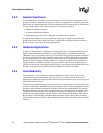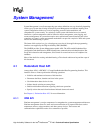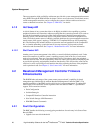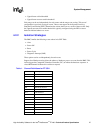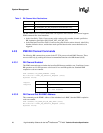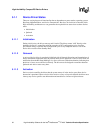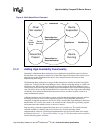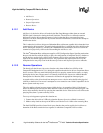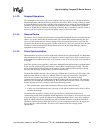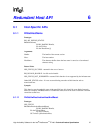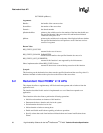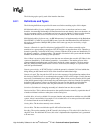
32 High Availability Software for the Intel
®
NetStructure
TM
ZT 4901 Technical Product Specification
High Availability CompactPCI Device Drivers
5.1.1 Device Driver States
There are varying degrees of functionality that are dependent on power modes, operating system
Hot Swap implementations, and device characteristics. But for a device driver to function in this
High Availability architecture we can generalize the required driver states down to three distinct
states.
• Initialization
• Quiesced
• Activation
5.1.1.1 Initialization
During initialization, the driver starts up and is loaded. The driver cannot “talk” directly to the
hardware devices it is controlling, with the exception of PCI configuration cycles. Intel has
provided the ability to perform PCI configuration cycles to any backplane devices even if the
device driver resides on the Standby Host.
5.1.1.2 Quiesced
A quiesced device driver is completely initialized with all internal allocations and instantiations of
device information completed, ready to perform direct device operations. A device driver waits for
notification from the Hot Swap Manager via a Start or Resume callback mechanism, indicating that
the driver is free to access the device directly. The driver must be designed to transition between
Quiesced and Active states at any time.
5.1.1.3 Activation
Device activation notifies the driver that the system master is in the Active state; direct device
interaction is permitted. When a device driver receives a Stop or Suspend callback, the driver must
clean up any device-specific state information and transition to a known or Quiesced state.



